How It Feels to Lose Your Memory & More Amazing Experiences
From having a bionic hand to diving hundreds of feet below the ocean's surface, we explore the glories and challenges of life in a body.
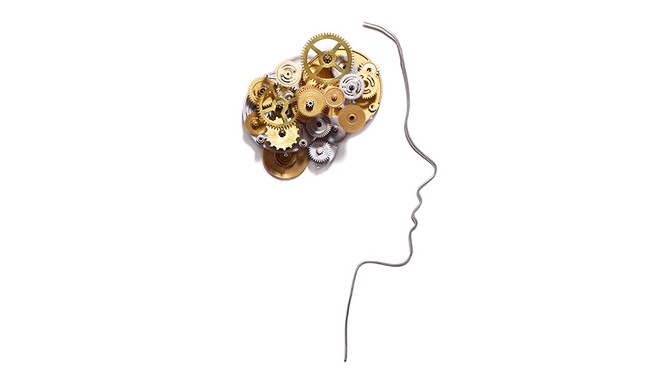
Photo: Adam Voorhes
How it Feels... to Lose Your Memory
Alysse Mengason, 45, suffered a bout of encephalitis and meningitis that put her in a three-week coma in 2003. When she awakened, she had lost two to three years' worth of memories.
"I don't remember waking up. My mom says the first thing I asked was, 'Where's Dad?' He'd died in 2001. I thought I was still a TV reporter, though I'd switched careers to public relations. And I only vaguely remembered my fiancé, Andrew, whom I'd known for less than a year. He and my mom asked people to send notes describing their memories of me, and when I read them, small details would dawn on me, like déjà vu.
"Did Andrew have to court me all over again? Well, yes and no. I needed so much care that we didn't have time. But he told me so many stories about our life together, and he was a huge part of my recovery. When I awoke from the coma in February, our wedding date was just four months away. I already had my dress.
"When you come out of something like this, you're almost like a child again. You're being told that you registered for these dishes, that your favorite color is blue. I'd think, 'Hmm, I like that china?' 'Why do I like blue?' Memory loss can be very emotional and frustrating. I spent nine or ten months in therapy, and I was the most uncooperative patient, because some of it seemed so elementary. Once, they took out a newspaper article and said, 'Underline all the capital letters'! But the therapists helped reintroduce me to my old life. We went to my office so I could visit my coworkers, my work space. When I saw everything, bits and pieces came back, but my memory is still not good at all. I'm terrible with names. I was left with epilepsy, but I'm very high functioning. I work, ski, do things with my family. Life is not perfect by any stretch, but Andrew is an incredible husband. We married in October 2003, and we have a healthy, wonderful 8-year-old daughter. They're the world to me."
"I don't remember waking up. My mom says the first thing I asked was, 'Where's Dad?' He'd died in 2001. I thought I was still a TV reporter, though I'd switched careers to public relations. And I only vaguely remembered my fiancé, Andrew, whom I'd known for less than a year. He and my mom asked people to send notes describing their memories of me, and when I read them, small details would dawn on me, like déjà vu.
"Did Andrew have to court me all over again? Well, yes and no. I needed so much care that we didn't have time. But he told me so many stories about our life together, and he was a huge part of my recovery. When I awoke from the coma in February, our wedding date was just four months away. I already had my dress.
"When you come out of something like this, you're almost like a child again. You're being told that you registered for these dishes, that your favorite color is blue. I'd think, 'Hmm, I like that china?' 'Why do I like blue?' Memory loss can be very emotional and frustrating. I spent nine or ten months in therapy, and I was the most uncooperative patient, because some of it seemed so elementary. Once, they took out a newspaper article and said, 'Underline all the capital letters'! But the therapists helped reintroduce me to my old life. We went to my office so I could visit my coworkers, my work space. When I saw everything, bits and pieces came back, but my memory is still not good at all. I'm terrible with names. I was left with epilepsy, but I'm very high functioning. I work, ski, do things with my family. Life is not perfect by any stretch, but Andrew is an incredible husband. We married in October 2003, and we have a healthy, wonderful 8-year-old daughter. They're the world to me."
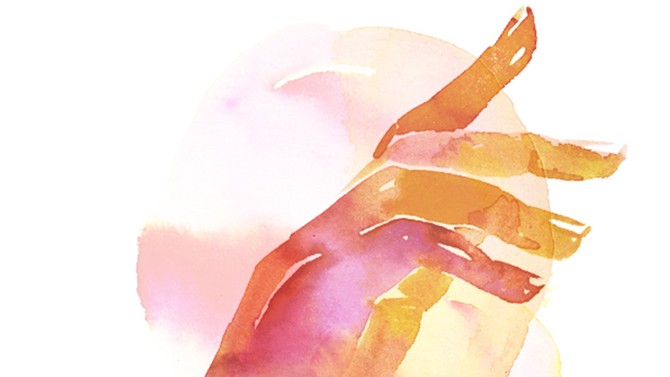
Illustration: Samantha Hahn/CWC-I.com
How it Feels... to Have a Bionic Hand
Nicole Johnson, 29, lost her left arm just below the elbow in a factory accident in May 2012.
"When I first started wearing a prosthetic hand, I wanted to throw it across the room. I couldn't even hold my coat to zip it. But now I love my hand. It's like a computer that attaches to a carbon-fiber socket that's replaced my forearm, and I program it to execute the grasps I use most often. One of my favorites is the single pinch, where my pinky, ring and middle fingers fold into my palm, and my thumb and index finger meet. That's great for tying shoes or picking up board game pieces. I contract my left bicep twice (I think of it as double-clicking a mouse), which sends electrical impulses down the wires in my socket to the motors in my fingers, and my hand moves into position. Even though the nerves in my arm were severed, they still send signals to my brain. If I squeeze and release my upper arm muscles and imagine spreading my fingers apart, my bionic hand will open. Actually, I can still feel my fingers. Doctors call this phenomenon phantom sensation. I know my hand isn't there anymore, but I just don't believe I have any limitations."
"When I first started wearing a prosthetic hand, I wanted to throw it across the room. I couldn't even hold my coat to zip it. But now I love my hand. It's like a computer that attaches to a carbon-fiber socket that's replaced my forearm, and I program it to execute the grasps I use most often. One of my favorites is the single pinch, where my pinky, ring and middle fingers fold into my palm, and my thumb and index finger meet. That's great for tying shoes or picking up board game pieces. I contract my left bicep twice (I think of it as double-clicking a mouse), which sends electrical impulses down the wires in my socket to the motors in my fingers, and my hand moves into position. Even though the nerves in my arm were severed, they still send signals to my brain. If I squeeze and release my upper arm muscles and imagine spreading my fingers apart, my bionic hand will open. Actually, I can still feel my fingers. Doctors call this phenomenon phantom sensation. I know my hand isn't there anymore, but I just don't believe I have any limitations."
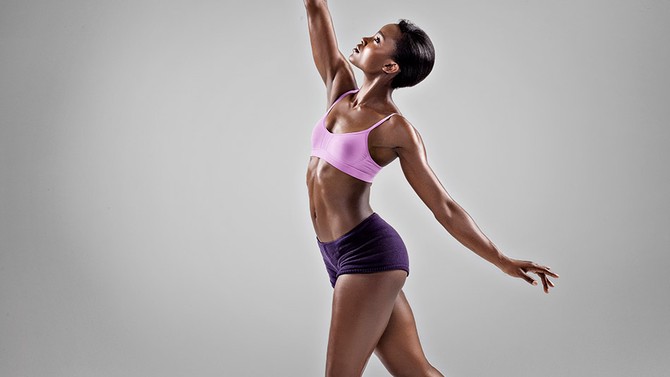
Photo: Henry Leutwyler
How it Feels... to Be an Aerial Acrobat
"In aerial acrobatics, you climb a long vertical length of silk or rope, wrap it around your body and then use it for support as you hang ten to 20 feet above the floor. The fabric is like a dance partner: When it pushes, you pull, mostly with your lower body. People are often surprised by how much legwork is involved. In one move, the double-knee hang, you're using just the backs of your knees to hold on. Like an astronaut, you begin to understand how your body functions when it's not upright. The double-knee hang really takes me back to the times I dangled off monkey bars in my youth. When you're an adult, your brain tells you to stop if something seems dangerous. But when you learn to trust your muscles, you know you'll be safe. You can't help but feel exhilarated and confident, even if you're upside down."
—Kiebpoli Calnek, 42, professional aerialist, creator of the group Black*Acrobat
—Kiebpoli Calnek, 42, professional aerialist, creator of the group Black*Acrobat
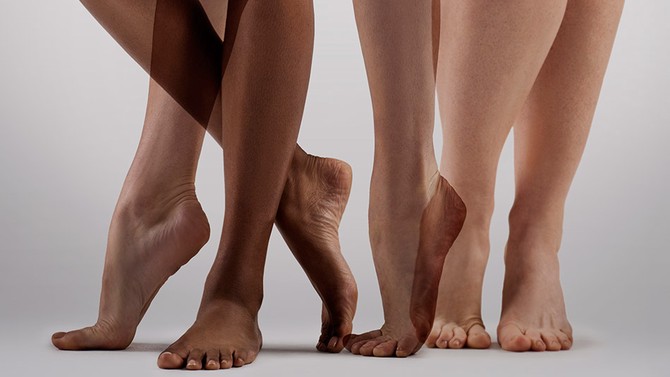
Photo: Henry Leutwyler
How it Feels... to Walk on a (Not So Tight) Rope
"I've walked a slackline, a one-inch-wide flat woven rope, in the mountains, over waterfalls and between buildings 12 stories high. I once traveled 315 feet across a valley in the Czech Republic with only a harness attached to the rope to keep me from plunging 100 feet to the ground. I placed my bare feet flat on the line, positioning it under my first two toes for stability. To keep my balance, I walked in a half squat, my calves and thighs as hard as rocks. My legs trembled; they felt like they could give out at any moment.
"A slackline isn't taut like a tightrope, and somewhere in the middle, where the line is loosest, I felt the pull of gravity. The line was shaking so much, I had to move with the rhythm of the sway until I could walk again. Only a few more steps, and I reached the end of the rope. I'd set a world record for longest trip across an elevated slackline."
—Faith Dickey, 25, professional slackliner
"A slackline isn't taut like a tightrope, and somewhere in the middle, where the line is loosest, I felt the pull of gravity. The line was shaking so much, I had to move with the rhythm of the sway until I could walk again. Only a few more steps, and I reached the end of the rope. I'd set a world record for longest trip across an elevated slackline."
—Faith Dickey, 25, professional slackliner
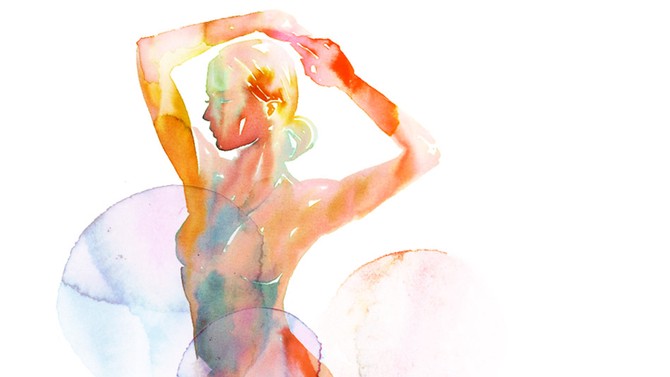
Illustration: Samantha Hahn/CWC-I.com
How it Feels... When Your Wife Has a C-Section
"My wife lay on a gurney, and I sat near her head. There was a little curtain set up over her body to block the view. Once the doctor finished the procedure, he said, 'Do you want to meet your baby?' I thought, 'Awesome!' and stood, which I don't think I was supposed to do. There was my son—and my wife's body cavity, with a pile of her organs stacked beneath her breasts. Even weirder, on the other side of the partition, she was looking up at me. I'm pretty squeamish—I once nearly fainted while watching my oldest child get stitches—but I felt fine. This was one of my kids being born."
—Bruce Arnold, 56, father of three
—Bruce Arnold, 56, father of three
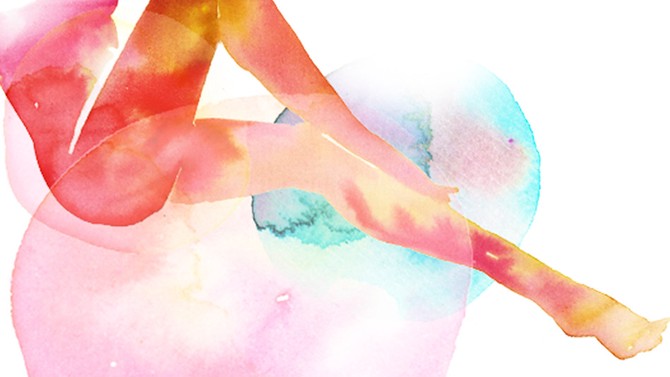
Illustration: Samantha Hahn/CWC-I.com
How it Feels... to Do Yoga with a Missing Limb
"I've been teaching yoga to fellow amputees and their instructors for two years. We often push ourselves to prove that we can do what we once did. But yoga is an oasis, a place to not feel pain or anxiety. When you understand that, you wind up pulling off poses you never expected to. It was such a beautiful moment when I figured out how to do a headstand without using a wall for support. I'd been so afraid of injuring my right leg when I landed. The trick was to use my core to roll down slowly and land gently on my toes; my abs are really developed since those are the muscles I use to lift my prosthetic leg when I wear it.
"You have so much more body awareness when you lose a limb. I now have great balance. When I stand on one leg in tree pose, I don't even sway."
—Marsha Danzig, 51, Yoga for Amputees founder, who lost her left leg below the knee to Ewing's sarcoma at age 13
"You have so much more body awareness when you lose a limb. I now have great balance. When I stand on one leg in tree pose, I don't even sway."
—Marsha Danzig, 51, Yoga for Amputees founder, who lost her left leg below the knee to Ewing's sarcoma at age 13
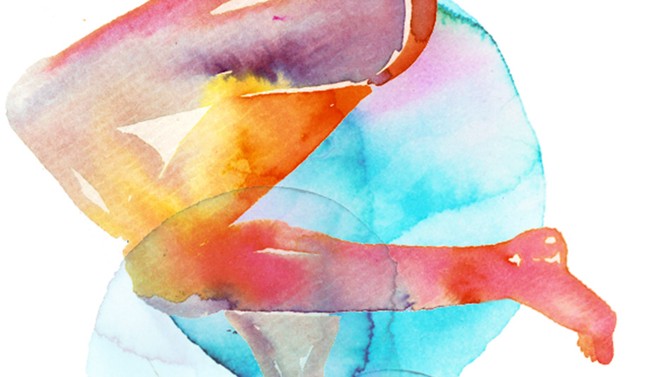
Illustration: Samantha Hahn/CWC-I.com
How it Feels... to Be a Free Diver
"On an unassisted free dive, when you plunge hundreds of feet below the ocean's surface without breathing equipment, you have to kick incredibly hard, first to propel yourself down into the water and then to make it back up to the surface. At the bottom of a dive, you're negatively buoyant, meaning that if you stop kicking, you'll immediately sink. You have to force your legs to work, even though they're in crippling pain, full of lactic acid and carbon dioxide, which have built up because you've been holding your breath. I've been on dives where my quads became paralyzed, and to make it to the top, I had to move my abs and glutes like a mermaid's. Thankfully, when you're some 30 feet beneath the surface, you become buoyant again. You can simply glide back up."
—Tanya Streeter, 41, free diving world-record holder
—Tanya Streeter, 41, free diving world-record holder

Photo: Adam Voorhes
How it Feels... to Be Punched in the Gut
"When you get hit with a body shot right under the ribs, it almost feels like you're floating. Once, when it happened to me, it was like the blow affected my nerve signals. I stayed upright, but I actually couldn't feel my body. I had to ask myself, 'Am I standing?' People think you have to hit someone in the face to hurt them, but a punch to the gut is what's devastating."
—Ana Julaton, 33, professional boxer and winner of the WBO and IBA Super Bantamweight titles
—Ana Julaton, 33, professional boxer and winner of the WBO and IBA Super Bantamweight titles
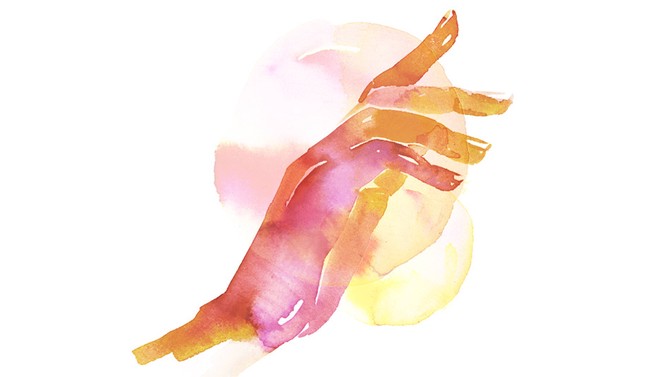
Photo: Henry Leutwyler
How it Feels... to Be a Sign Language Interpretter
Holly Maniatty, 33, specializes in signing at rock and hip-hop concerts.
"Your hands can represent so many things when you're an interpreter. Interpreting at a concert, I use my hands differently than when I'm signing for a class full of college students. And hip-hop requires about 50 percent more signs than slower speech or music; I might use 200 signs to interpret a John Mayer ballad, but six times that many for an Eminem rap. In hip-hop signing, you also have to gesticulate with extra force to emphasize a word, just like the rappers do. After signing for the Wu-Tang Clan for 90 minutes, I was so exhausted, I felt like I'd run a marathon. So just like an athlete, an interpreter has to warm up. For me that means stretching my hand ligaments to avoid damaging a muscle. But the connection between mind and hand, between the intellectual and physical, is seamless. I never think, 'I have to bend my hand to make it look like this'—just like you never have to concentrate on forming the words when you speak."
"Your hands can represent so many things when you're an interpreter. Interpreting at a concert, I use my hands differently than when I'm signing for a class full of college students. And hip-hop requires about 50 percent more signs than slower speech or music; I might use 200 signs to interpret a John Mayer ballad, but six times that many for an Eminem rap. In hip-hop signing, you also have to gesticulate with extra force to emphasize a word, just like the rappers do. After signing for the Wu-Tang Clan for 90 minutes, I was so exhausted, I felt like I'd run a marathon. So just like an athlete, an interpreter has to warm up. For me that means stretching my hand ligaments to avoid damaging a muscle. But the connection between mind and hand, between the intellectual and physical, is seamless. I never think, 'I have to bend my hand to make it look like this'—just like you never have to concentrate on forming the words when you speak."
From the May 2014 issue of O, The Oprah Magazine

